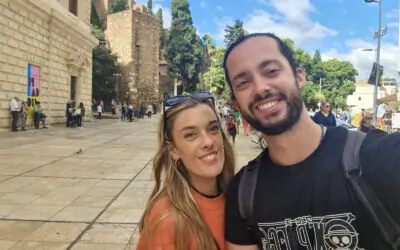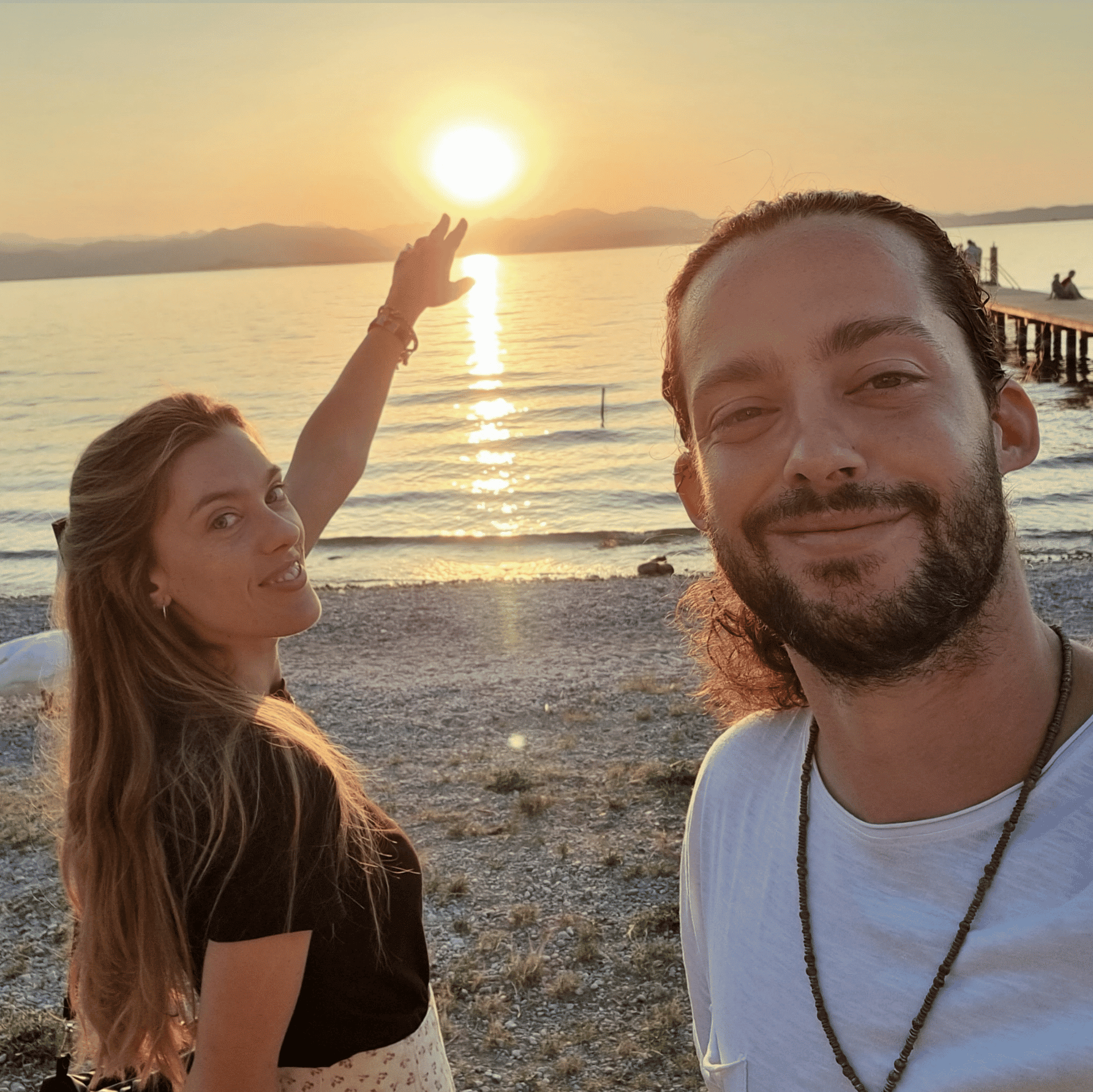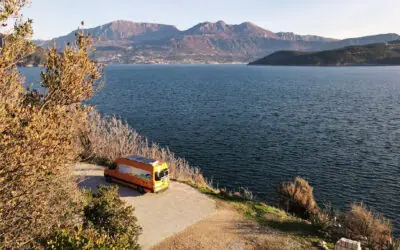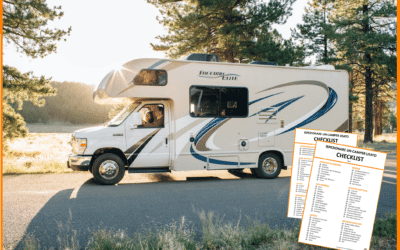“Knowing what you’re going to Spend,
will help you relax and focus on what’s Important”
Have you ever found yourself scrolling to photos of unbelievable destinations and asking yourself how much would it EXACTLY cost you to visit them? Or just start checking for prices but rapidly giving up after getting overwhelmed by the number of things to care about?
Well, it was happening to me too in the past, and I know it’s stressful. Why people are so feverishly prone to publish their travel photos but nobody tells you about how much do they spend? That’s one of the things I would be more interested in, perhaps even more than the photos!
After the initial frustration of planning my first travel plans, I started accumulating experience, and trip after trip I created and improved a simple method to orderly plan and customize my trips better than any travel agency ever could… and it works fantastic!
Today in less than one hour I can accurately quote the budget for any kind of trip, anywhere!
With this method, I planned road trips, getaways, and holidays for the past 10 years all over the world (Europe, Latino America, Asia, Africa, Oceania…), alone and with others (family, friends, girlfriend, etc.), with lower and higher budgets.
Today I decided to share with you my budgeting secret, so you’ll also be able to do the same and get a reliable quote for your future trips way in advance.
With this method, you’ll be able to know precisely how much a trip will cost you (flight, accommodation, transportation, food/drinks, attractions, visas, extras…everything included!), which can be also extremely helpful at the moment of evaluating alternatives.
The method is easy and free (you’ll just need to put a bit of effort into it!). All you need is Microsoft Excel (or any other similarly working program) and an internet connection.
Optional (but highly suggested!), is to keep an eye on my article 15 Essential Travel Apps for Smart Travelling. where I show you all the Apps/Websites I use to plan my trips and save big money.
If you have those, we are ready to go.
Let’s get started!
This guide aims to teach you to calculate by yourself the cost of any trip you are planning rapidly and easily; track your schedules and avoid the risk of forgetting any important cost.
For the sake of clarity, I divided the instructions into 10 easy-to-follow steps; read them carefully and in no time you’ll be an expert trip planner 😉 In many points, I included the icon of the apps which can help you budget that specific
If you have any questions, you can contact me in the comments below and I’ll be glad to clarify any doubt or issue you may encounter. Enjoy!
1. Download and Familiarize
with the Budgeting Template
The first thing you’ll have to do to get started is to download the Trip Budgeting Template I prepared for you.
The file is in .xlsx format, so you’ll be able to open it with Excel or any similar program.
Once downloaded, open the file and you’ll notice a large big table with 3 smaller tables on the sides.
For now, the only thing you should keep in your mind is that Green Cells are the only ones you should touch and fill-in while doing your research.
You can slightly modify the White Cells if that can help you to understand better what you’re doing, still don’t change their meaning. Absolutely don’t touch Red Cells, they contain formulas and work in automatic as you fill in the rest.
In the next steps, we’ll go through the whole table and I’ll explain to you how to fill in every single column.
2. Pick a Destination
and Hypothetical Dates
Let’s start easy! Every trip needs a name (yes, so poetic!): change the title on top of the spreadsheet with whatever you like (best related to the destination you are researching).
Once done, you’ll have to think about the dates in which you would like (or you’re thinking) to travel and fit them into our main table:
- Day: this is a coloumn you should not touch, it is there only to facilitate you counting the lenght of your trips
- Date: this is a Green Coloumn, so you’ll have to fill it in. Write the dates you’re planning to travel, starting from the top. Leave blank the cells you don’t need.
3. Investigate the Price to get There
As often, moving to a location is one of the larger dents in your budget; the first thing to check before diving deep into planning any vacation, trip or journey, is the price to get there!
If you’re planning to fly, I would suggest you have a look at Skyscanner for your dates (or around them too if you’re flexible).
Rome2Rio is an excellent website to find prices of all kinds of transportation (bus, train, taxi, cars, etc.).
With Maps.me you can calculate the best route if you’re planning to self-drive, which can in turn aid you to calculate the fuel cost.
The only thing you have to do, for now, is just know how much will cost you to go and come back. If that’s a fair amount for you and within your budget, write it down on paper for now, and it’s time to start diving deeper into planning.
NOTE: If you want to know more about all the apps that can help you budget a trip (and save you a lot of time and money!), I strongly recommend you to read my article 15 Essential Travel Apps for Smart Travelling.
4. Time to Dream Big: Research and Sketch all the Things
you would like to Do and See!
Now it’s time to get informed and know what are the activities you available on your destination(s) and which ones you’re interested in joining: museums, beaches, parks, events… note down on a list everything you’d like to see and do.
For now, just don’t care about the cost and details (we’ll come back to that later!).
Tripadvisor, Lonely Planet, Lost on the Route, and the countless blogs on the internet will help you greatly in this phase! Try googling “Top Activities”, “Best Things to Do”, “Best Museums”, “Must-see Places” (etc.) for your destination; read some reviews and figure out how would you prefer spending your days at your destination and doing what.
Once you’re done, let’s go-to numbers, and let’s try to make it real!
5. Do your research: Accommodation
Let’s start with accommodation! How much every night at my destination will cost me? As we are lucky enough of living in the future, all our answers are at our fingertips and we can find out in just a few minutes.
Depending on which kind of accommodation you’re looking for, give a scroll on Booking (for hotels), Airbnb (for apartments/houses), Hostelworld (for hostels), Hotel Tonight (for hotel deals if you were to book on the go) or Couchsurfing (for free accommodation in the house of welcoming hosts).
Once you’ve got a fair understanding of where you would like to stay, fill in the accommodation columns in the spreadsheet:
- Accommodation: Write here for each day of your trip where you’re planning to stay on that particular night (you can write the website or also the name of the hotel/residence/place you’re planning to stay)
- Accommodation Cost: Write here the cost for each night in the respective accommodation place. If you’re getting a room/flat with more people, remember to divide the cost per night by the number of people, to budget only your share. Example: if you’re two and you’re renting a double room for 50Euro/night, write 25).
You can fill the whole spreadsheet with the currency you like, just pick one and don’t forget to be consistent (convert prices in other currencies to your main one before entering them, you can do that easily using XE Converter).
6. Do your research: Moving Around Costs
Once you know where you’re going to sleep, you should think about how to move around the area (or between destinations).
To find timetables, price comparisons, routes and gather more information about how to move around, check websites such Tripadvisor, Lonely Planet (and their respective forums), Uber, or Rome2Rio... or just simply google what you want to know (normally it appears always on top ;).
Once you have done your job, fill in the columns as follow:
- Transportation: Simply write which transportation mode you decided to use (and the name of the company if you already chose one).
- Transportation Cost: Write the estimated price for your dislocation/moving around for that specific day (remember that the budget it’s for one person, so if you share a vehicle -ex. car- then remember to divide the total cost by the number of people). On day 1, also don’t forget to add the cost to reach your destination!
NOTE: If you’re travelling over-night and you are sleeping on your vehicle (plane, bus, night-train, etc.), accommodation will be zero for that day (useful thinking about it to save money and precious time on long road-trips).
7. Do your research: Attraction Costs & Details
You have the cost of reaching your destination, accommodation, and moving around: now it’s the time to fill in your sweet time with what you love to do and create an orientation day-to-day plan.
This is extremely important not only for thinking about the budget but also to optimize your time allocation, see what you can combine on which days and what perhaps cannot fit in your schedule.
Check opening times for attractions, entrance fees, distances to reach them, tips on how and when to visit them… anything you might find useful! Doing good research before your trip will ensure you won’t be missing out on things you didn’t know and you won’t bite your hands afterwards.
Once you researches, again, fill in the table as follows:
- Plan for the day: Here you should write all the things to plan to do on that specific day (everything is flexible and you can always change it at any time, but try to make yourself an idea) if you researched times (of transportation, check-ins, attractions, etc.) write them also in here; this column is going to be your main guidance
- Activities Cost: Write here the costs you researched for the activities you intend to do (museum fees, temple fees, sports equipment, park tickets, events tickets, etc.) for each day of your holiday/trip.
PRO TIP: If you need to book activities offered by several agencies/tour operators, try to google words such as “Budget”, “Affordable”, “Cheap” etc. and be very specific! That will help you to find the best deals and also find review comments from Tripadvisor where people leaves honest reviews about their experiences and how the felt about the price/quality of such activities.
As an example, if you write “African Safari” on google, anything will pop up and you’ll be overwhelmed with options. If you’re more specific, as for example “Affordable Safaris from the United Kingdom to Kenya“, you’ll skim a lot of “noise” and get the chance to find the best deals for your pockets.
8.Do your Research: Dining Costs
Almost all places offer a variety of food and prices. At this phase, you’ll have to try to estimate a daily average cost for your meals.
Consider whether you have some meals included in your accommodation (ex. breakfast, all-inclusive, or half-pension) or with your transportation (normally on long-haul flights/buses).
Then check on Forums (ex. Tripadvisor, Lonely Planet, Lost on The Routes Guides, Google…) and on Numbeo to make yourself an idea of meal prices and estimate your dining costs. Complete the column as follows:
- Dining Average Cost: estimate an average cost for your meals and fill the column (if unsure, I suggest entering the upper bracket of your price range; if then you’ll spend less, better for you!).
9. Think about Fixed Costs you’ll Incur
Last but not least we reach the fixed costs; in other words, those costs that don’t fall in any of the previous categories, often to pay in advance, and which are necessary (or strongly recommended) to reach and fully enjoy your destination.
At this stage, brainstorm and try to think about all hidden costs that sometimes you may overlook; then fill in the small table on the right side of the spreadsheet as follows:
- Fixed Costs: Fill in the costs for Visa (you can check if you need one here Project Visa), Insurance (if you’re getting one), Taxes (if applicable), cost of gear you’ll need to purchase in advance (if you rent it, then it’s already in attractions cost) and anything else extra you can think of.
10. Check the Grand Total Cost
& Review your Plan
Once you have correctly completed all the previous steps, the red table on the right side of the spreadsheet will be automatically filled-in and you’ll see a resume of all expense categories and also the total: the final budget for your trip.
Now you found the answer to the question “How much would it cost me a trip to XXX?”. If you like it, you’re ready to book and pack. If you think it’s too much, you can always go back and try to tweak your plan (and costs!).
The advantage of using this Excel Template is that you’ll have all your costs in front of your eyes on just one sheet and by planning day by day, you can easily design and re-design your journey while keeping the budget and schedule under control.
Planning a trip for good requires time and dedication; if you want to know how much it will cost you, you need to work for it. This is the art of self-planning!
With experience, in one-two hours you should be able to fill in a whole table; doing it for more than one helps to compare alternatives and may also aid you to convince other people about your plan if you wish to.
I left the file on purpose without protections to allow you to modify it and tweak it according to your needs, I truly hope it’ll facilitate your life in planning your upcoming trips 😉
Conclusion
Did you find this article useful? Do you have any more questions about any of the points? You encountered issues in using my Trip Budgeting Template or you have suggestions to improve it even more? Let me know in the comments below, I would be happy to hear your opinion about it!
Thanks for reading! 🙂
Travel Glocal: How to Find Truly Local Experiences while Traveling!
On a beach in Brazil, after a football match (2017)As global tourism rises yearly more than before, touristic destinations are increasingly adapting to higher tourism inflows. While this surely made traveling easier and cheaper in the last two decades, in some way it...
15 Curious Fun Facts about Liverpool that will Surprise you!
Liverpool is a lively city and metropolitan borough located on the north-west coast of English and the capital of the English county of Merseyside, which is visited yearly by more than 1 million international tourists and 1,5 domestic visitors annually. A stunning...
10 Reasons why Traveling Europe by TRAIN is Awesome!
Europe is probably the most inter-connected continent in the world: low-cost airlines, long-haul buses, generally well-maintained roads, and of course...trains! The European rail network is extremely vast, as trains have played a major role in developing the whole...
10 Awesome Benefits of Exploring the World with a Travel Buddy
It has been almost 15 years since I discovered how much I LOVE traveling around our gorgeous planet Earth: I love it so much that I also decided to make my mission to work while traveling full-time! During the years, I've been traveling in all kinds of ways (by plane,...
























0 Comments